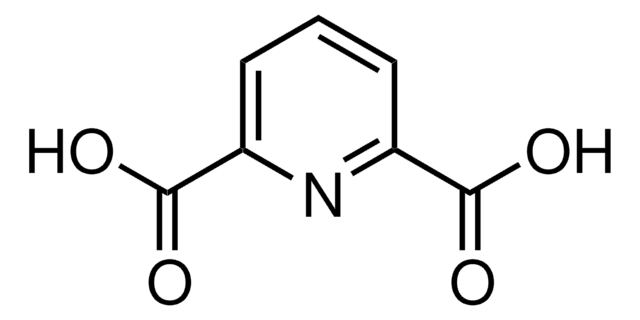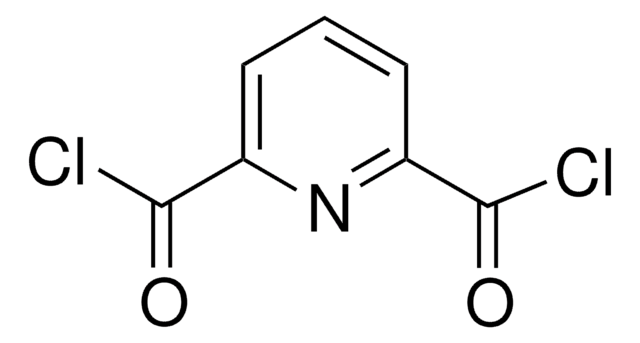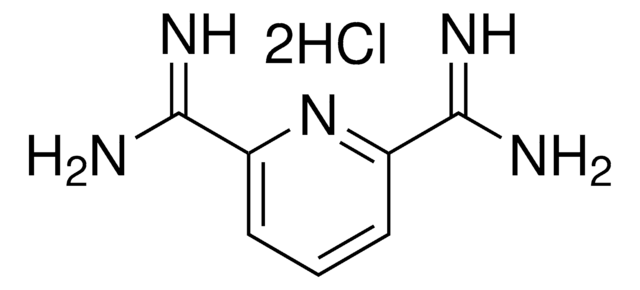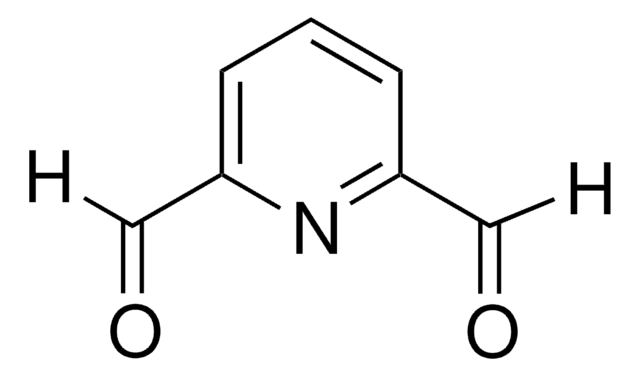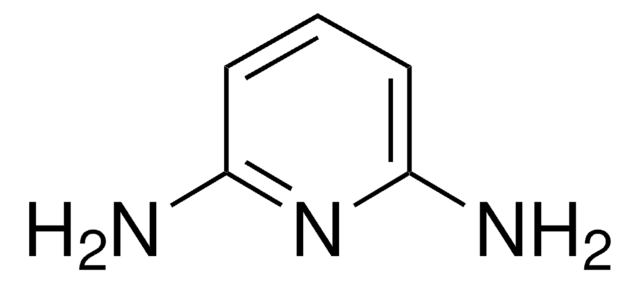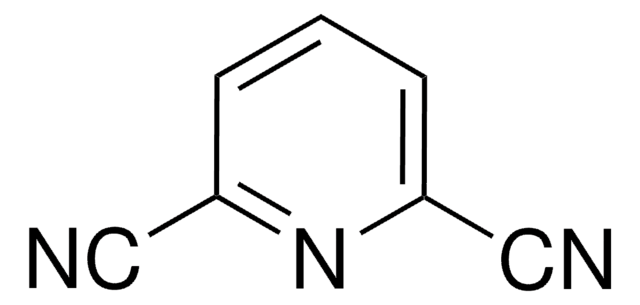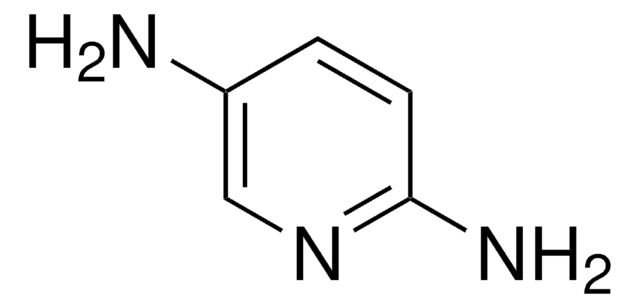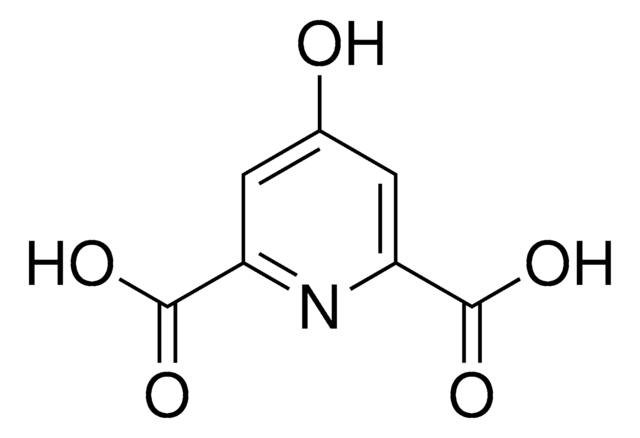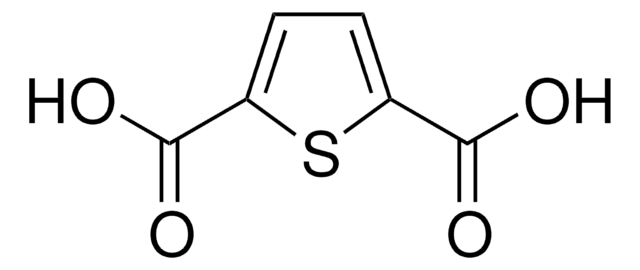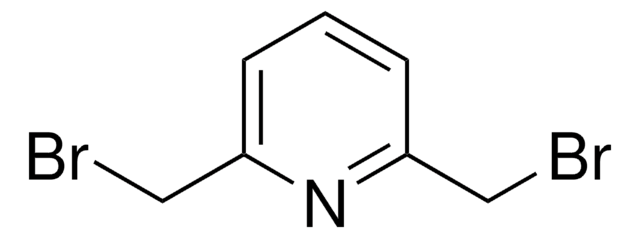464902
2,6-Pyridinedicarboxamide
97%
Iniciar sesiónpara Ver la Fijación de precios por contrato y de la organización
About This Item
Fórmula empírica (notación de Hill):
C7H7N3O2
Número de CAS:
Peso molecular:
165.15
MDL number:
UNSPSC Code:
12352100
PubChem Substance ID:
NACRES:
NA.22
Productos recomendados
assay
97%
mp
317 °C (dec.) (lit.)
functional group
amide
SMILES string
NC(=O)c1cccc(n1)C(N)=O
InChI
1S/C7H7N3O2/c8-6(11)4-2-1-3-5(10-4)7(9)12/h1-3H,(H2,8,11)(H2,9,12)
InChI key
UUVCRNTVNKTNRK-UHFFFAOYSA-N
Categorías relacionadas
General description
2,6-Pyridinedicarboxamide is an excellent tridentate ligand for transition metals (Cu2+, Ni2+).
Application
2,6-Pyridinedicarboxamide may be used in the preparation of new molecular turnstiles based on Sn-porphyrin derivatives.
signalword
Warning
hcodes
Hazard Classifications
Eye Irrit. 2 - Skin Irrit. 2 - STOT SE 3
target_organs
Respiratory system
Storage Class
11 - Combustible Solids
wgk_germany
WGK 3
flash_point_f
Not applicable
flash_point_c
Not applicable
ppe
dust mask type N95 (US), Eyeshields, Gloves
Elija entre una de las versiones más recientes:
¿Ya tiene este producto?
Encuentre la documentación para los productos que ha comprado recientemente en la Biblioteca de documentos.
Los clientes también vieron
Victor Maurizot et al.
Chemical communications (Cambridge, England), (8)(8), 924-925 (2004-04-08)
A heptameric amide of 2,6-diaminopyridine and 2,6-pyridinedicarboxylic acid coordinates to Cu(II) to assemble into a double helical complex with a string of six shortly spaced Cu ions.
Aurélie Guenet et al.
Chemistry (Weinheim an der Bergstrasse, Germany), 17(23), 6443-6452 (2011-04-22)
The design, synthesis and structural characterisation, in solution, of two new molecular turnstiles based on Sn-porphyrin derivatives are described. The system is composed of a stator (5-(4-pyridyl)-10,15,20-triphenylporphyrin), a hinge (Sn(IV)) and a rotor (handle equipped with 2,6-pyridinedicarboxamide as a tridentate
Synthetic ion transporters can induce apoptosis by facilitating chloride anion transport into cells.
Sung-Kyun Ko et al.
Nature chemistry, 6(10), 885-892 (2014-09-23)
Anion transporters based on small molecules have received attention as therapeutic agents because of their potential to disrupt cellular ion homeostasis. However, a direct correlation between a change in cellular chloride anion concentration and cytotoxicity has not been established for
Global Trade Item Number
| Número de referencia del producto (SKU) | GTIN |
|---|---|
| 464902-1G | |
| 464902-10G | 4061833432181 |
Nuestro equipo de científicos tiene experiencia en todas las áreas de investigación: Ciencias de la vida, Ciencia de los materiales, Síntesis química, Cromatografía, Analítica y muchas otras.
Póngase en contacto con el Servicio técnico